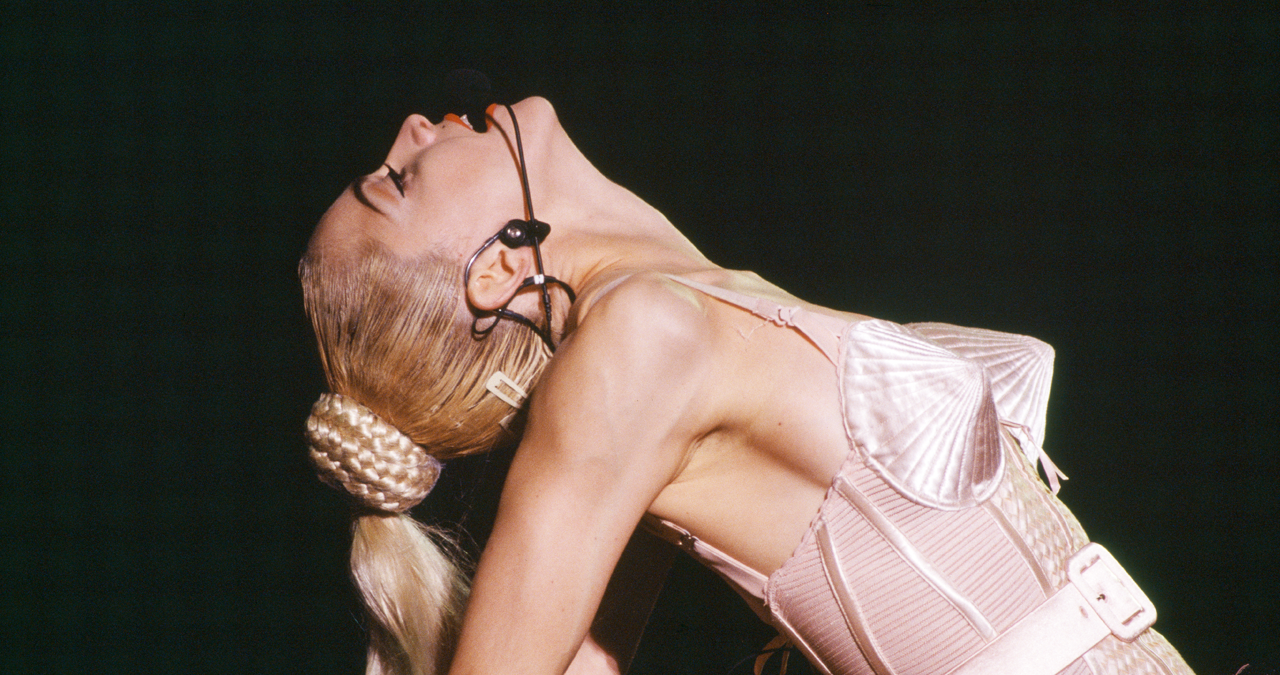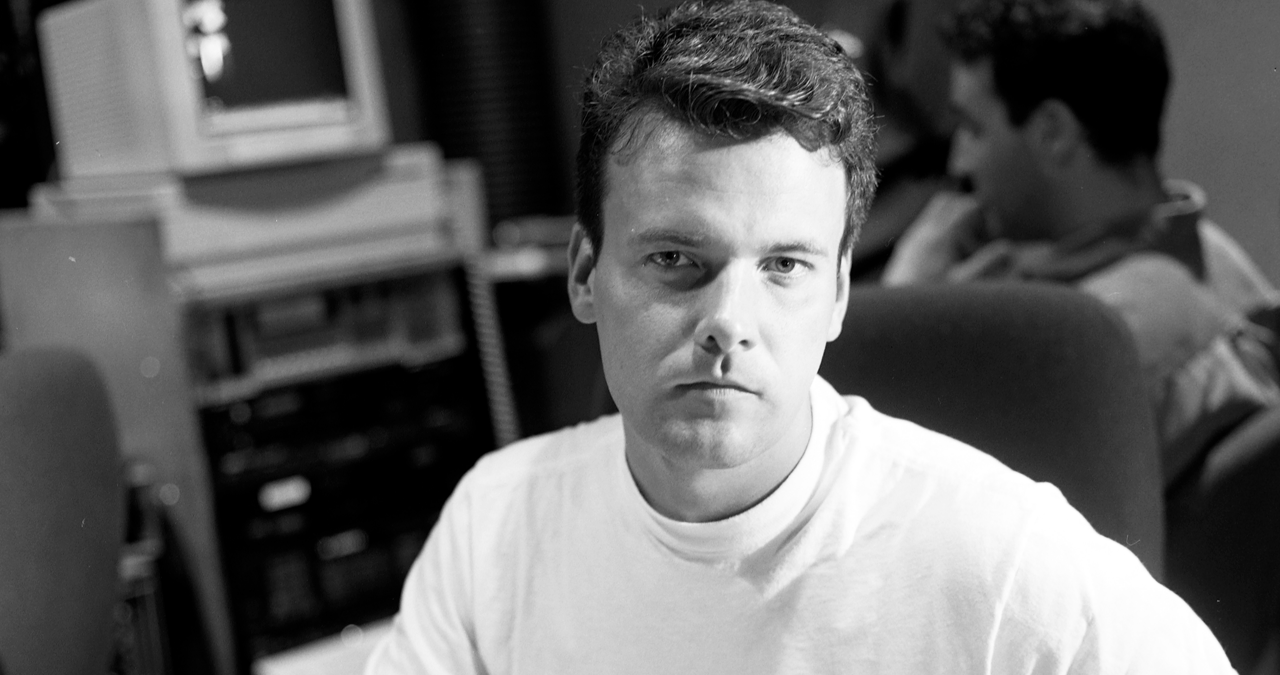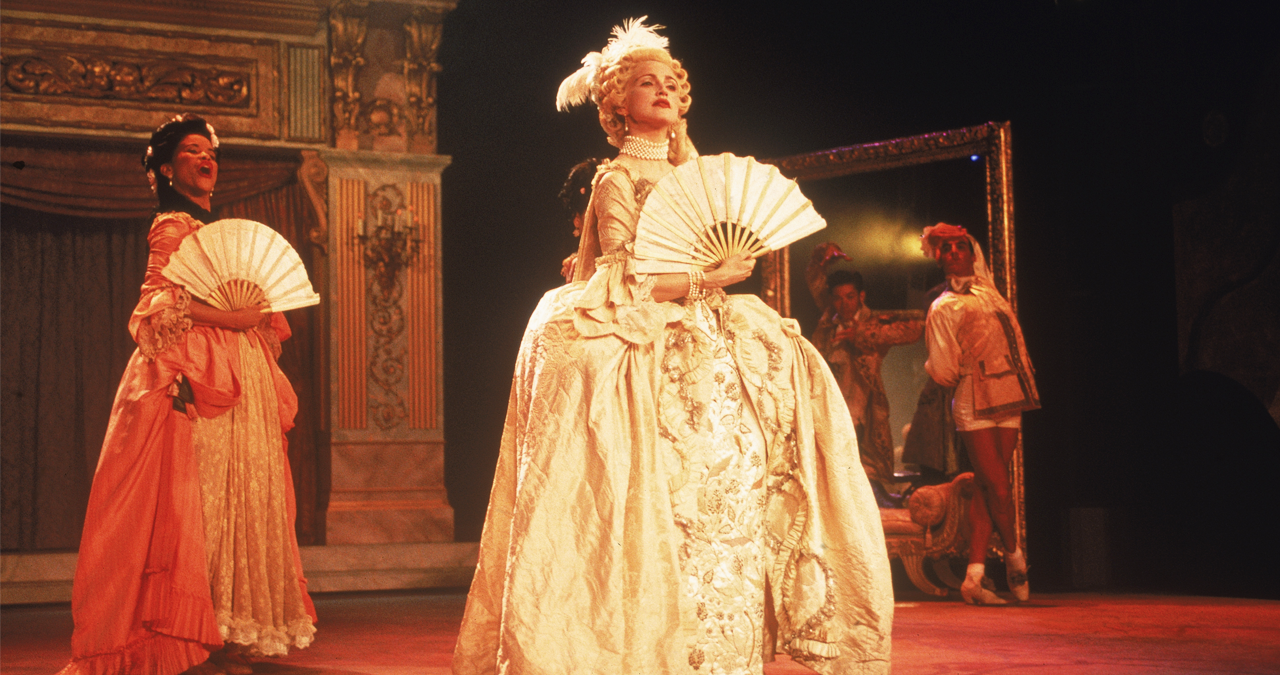“When the record company heard it, they said, ’This is a number one smash record. Let’s not put it on a B-side and lose it’”: The low-budget recording story of one of Madonna’s most iconic hits
It might seem an obvious winner now, but Madonna’s Vogue was at first the speedily and cheaply-built flip side to an entirely different single

RECORDING WEEK 2025: “Strike a pose” commands the Queen of Pop at the outset of one of her most recognisable singles. Yet Madonna’s perennial dancefloor-summoning monolith Vogue was originally rustled up as the cheap backing to the inferior Keep It Together single.
At the cusp of the 1990s, Madonna was riding high following a decade that had seen her profile ascend from that of kooky NY street kid to chart-dominating titan of modern pop. At the age of 31, Madonna had become the first artist in history to have a stunning 16 consecutive top 5 singles.
But, as a new decade dawned, Madonna was beginning to worry.
1989’s fourth studio album, Like a Prayer had been a mammoth success on both a commercial and an artistic level. Yet its emotive fourth single, Oh Father, had frustratingly broken Madonna’s golden streak, landing outside of the top 50 entirely.
It didn’t take an industry analyst to realise that this blow was likely nothing to really worry about. The single’s towering parent album, after all, had been released six months prior, and was by now well-worn by Madonna’s ever-growing legions of acolytes.
Those devotees were keen to move on to the next chapter in Madonna’s increasingly inventive saga.
But, with a further single release planned from Like a Prayer, Madonna and her label, Warner Brothers realised that something new was also needed to ensure her followers parted with their cash.
Rather than backing the next single - Keep It Together - with another album cut, the team decided to lure the fans in with a fresh studio song. Perhaps something with a different flavour to the more emotive material Madonna was exploring during the Like a Prayer era.
The seeds of one of Madonna’s most vital songs were being sown.
Want all the hottest music and gear news, reviews, deals, features and more, direct to your inbox? Sign up here.
Madonna had been used to working with New York-based producer and DJ Shep Pettibone. The man behind numerous remixed and edited single versions of her tracks, Shep was a reliable pair of hands for quickly and efficiently coming up with the goods.
Now he was being asked if, for a change, he’d like to try his hand at building a new, original song for Madonna.
“I was kind of, I guess at that point, Madonna’s favourite remixer, so I was remixing all of her songs,” Shep told Billboard. “I did the [official remix] album You Can Dance with her, and I was doing a lot of additional production on the songs as well. For instance, Like a Prayer, she chose my single version after I had done what I did on that.”

Eager to get started, Pettibone was hindered by a quite paltry budget, but armed with tech, ideas and a packed contact book, Shep knew that he could make the thin $5,000 go far.
Shep enlisted Fred McFarlane for keyboards, bass and synth programming while Alan Friedman handled the beats of what was posited as a more club-flavoured B-side. A bit of light relief after the more profound Like a Prayer.
“The best way we worked was when [Madonna] just left me alone and I did my thing,” Pettibone told Billboard, “With Vogue, for instance, that was just supposed to be a throwaway B-side for Keep It Together. She wasn’t in the studio for the final production mix of it. You know, it was like, ‘Who cares.’ But I thought, ‘Hey, this is my chance to do something great here,’ and I gave it my all. I think I gave a little something extra. And it definitely came across.”
Propelled by a relentless, striding beat and a grooving two-bar bass loop, Pettibone and friends built a striking foundation for Madonna to go to town on.
Upon being sent the first version of this backing track, she was immediately inspired.
Pettibone's music vividly brought the sashaying ‘Vogue’ dancers she'd only recently witnessed in the clubs of New York to the forefront of her mind. Madonna set to work on channeling the hyper-cool poise of this dance form into her lyric
This ‘Vogue’ dancefloor approach had originated in the ballroom drag scene in Harlem during the 1980s. The Vogue dancer strutted in an ironic, caricatured manner, emulating a catwalk model or self-assured, rich flaneur.
Driven by unfettered ego and attitude, the Vogue had become popular in gay and drag clubs. No stranger to the scene, Madonna was already enamoured by the mixture of irony and power that the Vogue conveyed well before putting pen to paper.
“[Vogue] was inspired by walking into a nightclub and seeing the [iconic Latino and African American LGBTQ ballroom dance troupe] Xtravaganza Crew Vogue-ing and I was like ‘woah, what the hell is that’,” Madonna recalled in an interview with iHeartRadio.

At this time, Madonna was also working on (soon to be boyfriend) Warren Beaty’s stylised caper Dick Tracy. In the film, Madonna portrayed nightclub starlet Breathless Mahoney, and was set to release an album of original material (dubbed I’m Breathless, and co-written with Stephen Sondheim) to accompany and promote the film.
Her mindset was becoming increasingly aligned with this flamboyant fictional character. Following a seperate request from Beaty that Madonna think up with a song that came from Mahoney’s viewpoint, Madonna had started seeing things through her prism; “She was obsessed with speakeasies and movie stars and things like that,” Madonna was quoted as saying in book Madonna: A Rebel Life. “The idea for the [Vogue] lyrics came through that request. Coincidentally I was going to [hailed house music club] Sound Factory and checking out these dancers who were doing this new style of dancing called Vogueing. I thought it was a really cool dance, very presentational, elegant, all about vanity.”
With the twin notions of Breathless Mahoney's celebrity-worship and the life-affirming energy of the Vogue swimming around her head, Madonna was charged to pour them into her new song.
It wasn’t until she sat down on the flight from her Hollywood home to meet with Shep at a New York basement studio that Madonna finalised the lyric. The song would be called, simply, Vogue.
As mentioned earlier, the budget for Vogue was tiny. And, as Madonna arrived at the address Shep had given her on West 56th Street, the global megastar likely arched an eyebrow as she was led down into the stuffy, cramped basement studio (not owned by Shep, we might add).
There, the chart-topping monarch discovered a ramshackle affair. Ushered into a homemade vocal booth (expeditiously crafted from a wardrobe), Madonna surely began to wonder whether this recording was going to be worth the trip.
“They had converted a closet that had bi-fold doors on it. They had put a sliding glass door on it, and that was the vocal booth!,” Pettibone recalled in his Billboard interview.
Operating a cheap 24-track recording machine, Shep and Madonna made the most of the minimal set-up. “I think only a few of the cards [on the multitrack] were working right,” Shep said. “Because it was a secondhand machine. So, to record a track you’d have to pull out, slide out a card, and then move it to the next track to be able to record the next track. And so on, and so on. It was that low-budget.”
Pairing perfectly with the vivid and energetic 116bpm backing track, Madonna’s verse lyric framed the chorus’ refrain of ‘Vogue - let your body move to the music’ with some counterbalanced shade:
Look around, everywhere you turn is heartache
It's everywhere that you go
You try everything you can to escape
The pain of life that you know
In her lyric, Madonna had framed the club as a restorative arena of spectacle; a place to outwardly present as whoever you wanted to really be.
The summons to engage in the swaggering ritual of Vogue was positioned as the ultimate act of deliverance - by flaunting an exaggerated version of yourself, listeners could strut out from reality entirely.
I know a place where you can get away
It's called a dance floor
And here's what it's for, so…
Come on, Vogue
Pettibone was bowled over with the cool that was now imbued into his musical idea.
Now a pro in the booth, Madonna’s vocal recording process was speedy. “She had the choruses together, and the verses together. And she sang those in place, one by one. And I gotta also add: first take. Especially the verses,” Shep told Billboard. “She was always a first-take artist. You didn’t have to go back in and punch a word. No tonal problems. She was pretty amazing that way.”
Though the verses and choruses scanned perfectly, the middle eight was crying out for something else. A centre piece to punctuate the flow.
Initially suggesting a rap, Shep and Madonna settled on a spoken-word passage wherein Madonna recited the names of various iconic figues from the Golden Age of Hollywood.
Madonna led listeners by the hand on an aural tour through this veritable Walk of Fame.
Greta Garbo, and Monroe
Dietrich and DiMaggio
Marlon Brando, Jimmy Dean
On the cover of a magazine
Ever-conscious of the optics of celebrity, Madonna was, as some writers have perceived, shrewdly establishing herself as the natural successor to this litany of legends. The final pinnacle of celebrity.

Following a few adjustments to the mix (namely the addition of some jaunty house piano to mirror the Sound Factory vibe), the first pass of Vogue was completed, and the pair knew that what they'd put together was bigger and better than any B-side had the right to be.
Following further mixing, the finished track was presented to Warner Brothers. The executives too were bowled over by the obvious brilliance of what they heard. “When the record company bigwigs heard it, they said, ’This is a number one smash record. Let’s not put it on a B-side and lose it.’” Pettibone told Entertainment Weekly.
Backed by an equally iconic, House of Xtravaganza-guesting video - directed by future filmmaking luminary David Fincher - the Vogue single was released in the UK on March 20th 1990 (and March 29th in the US) as well as being quickly (and incongruously) added to Madonna’s Dick Tracy soundtrack LP I’m Breathless, released in May of that year.
Regular radio play built swift momentum, and the single began to confidently stride its way into the top spot of the US, UK and Australian charts, its infectious groove and call-to-action chorus becoming inescapable during the spring of 1990.
Vogue, then, first conceived as a space-filling B-side, would go on to be one of Madonna’s signature staples.
Her hymn to the confirmatory power of the club, Vogue also serves as a tribute to those LGBTQ and drag icons who resonated so strongly with Madonna as they defiantly owned the dancefloors of the clubs of Manhattan.
It's a song that also celebrates the idea of self-actualisation through expression more generally, and has inspired millions to heed Madonna's call, and strike their own pose.

I'm Andy, the Music-Making Ed here at MusicRadar. My work explores both the inner-workings of how music is made, and frequently digs into the history and development of popular music.
Previously the editor of Computer Music, my career has included editing MusicTech magazine and website and writing about music-making and listening for titles such as NME, Classic Pop, Audio Media International, Guitar.com and Uncut.
When I'm not writing about music, I'm making it. I release tracks under the name ALP.
You must confirm your public display name before commenting
Please logout and then login again, you will then be prompted to enter your display name.
